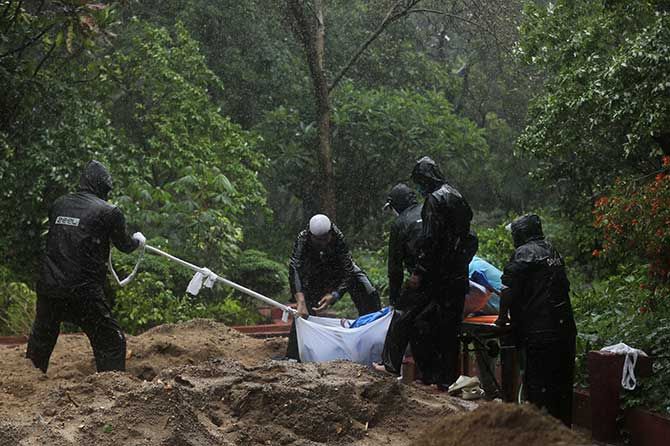 | « Back to article | Print this article |
'We started analysing young patients and realised that they had causes like undetected diabetes, which suddenly flares up during COVID-19.'
'Secondly, hypothyroidism was one of the factors.'
'And obesity.'

Why are young people of 35 or less dying in Mumbai from COVID-19?
Are your elderly parents diabetic? Testing your own blood sugar could be a matter of life and death in COVID-19 times?
Since April, Dr Avinash Supe, executive director, Hinduja hospital, Khar, north west Mumbai, has been in charge of a committee appointed by the Maharashtra government to analyse COVID-19 deaths in the Mumbai urban area.
The committee of senior doctors issued reports based on their findings that are shared with city and state hospitals and the Maharashtra medical fraternity.
This retrospective analysis is invaluable because it helps reduce COVID-19 fatalities in the tough days ahead.
The committee's first report in early May discovered that most of the deaths in Mumbai in April were of males, above 50, and in patients with comorbidities like diabetes (40 per cent), hypertension or suffering from cardiac issues.
It also found that delays in diagnosing COVID-19 and reaching the hospital contributed to higher mortality.
Dr Supe, whose committee submitted a few weeks ago their second report looking at the 528 deaths that occurred in May, offers some key information on fighting COVID-19 on both a personal and societal/city level.
Work is slowly beginning on the third report, but there is a lot of data to process with the increased deaths in June.
Vaihayasi Pande Daniel/Rediff.com gives us insights into the report submitted.
Key points of a note from Dr Supe and Report II summarised here, while details are further below:
C. Anti-viral drugs like remdesivir and tocilizumab;
D. Drugs to prevent blood clotting.
*Malad, Dahisar and Borivali are in north west Mumbai. Bhandup and Mankhurd are in north east Mumbai. Dharavi is in north central Mumbai. Worli is in south central Mumbai. And Thane is a township north east of Mumbai.
Feature Production: Ashish Narsale/Rediff.com
